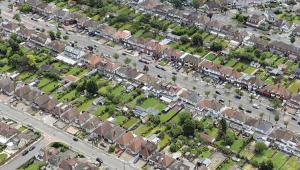While pensioners and poorer households saw their incomes increase, wage growth for higher earners continued to flat line, however, the think-tank also warned that the divide between the generations in terms of living standards is growing.
In its analysis of statistics published today by the Office for National Statistics, the foundation highlighted strong income growth for retired households and the poorest 40%.
Incomes for the poorest fifth of households were particularly buoyant and grew by 5.1% in 2015-16, driven by strong employment growth, low inflation and rising pensioner incomes. This, combined with a fall in income of the richest fifth of households, has led traditional income inequality to drop to its lowest level in 30 years.
The data showed that the median UK household disposable income was £26,300 in 2015-16, £600 higher than the previous year and £1,000 higher than the pre-downturn value. The ONS also drew attention between older and younger households.
Claudia Wells, head of household income and expenditure analysis at the ONS, said: “Household incomes are above their pre-downturn peak overall, but not everyone is better off. While retired households’ incomes have soared in recent years, non-retired households still have less money, on average, than before the crash.”
Matt Whittaker, chief economist at the Resolution Foundation, expressed doubts over how long this rising income trend could last.
He said: “The last three years of growth have come off the back of a living standards squeeze so deep that typical working age families are still £354 poorer than they were before the financial crisis. And with employment plateauing, productivity growth refusing to budge and inflation rising, the risk is that this mini-boom won’t continue.”
Moreover, weak income growth for younger households has led to a widening inter-generational gap in living standards, Whittaker said.
“While traditional income inequality has been falling – for now – new living standards divides have opened up as working age households continue to struggle. Getting to grips with this sluggish growth for working middle-income households will be a key mark on which to judge the prime minister’s ambitious domestic reform plans.”











